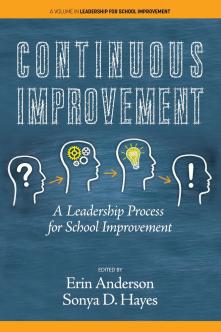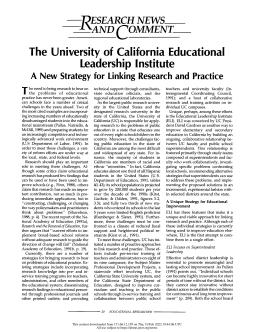Improvement Team Leads’ Perspectives on Fitting Improvement Work to Their Sites
Published
Summary
This chapter in an edited book focuses on the work of two improvement network hubs in California as they tried to support participating districts and schools to improve the proportion of students “on-track” for post-secondary success. California has a particular stake in figuring out how to support districts in consistently using continuous improvement (CI) to achieve measurable gains in student outcomes because state policy (e.g., Local Control Funding Formula, California’s Every Student Succeeds Act Plan) prescribes CI as the approach to improvement in its accountability system.
How School Districts Craft Coherence Towards Continuous Improvement
Published
Summary
This study uses qualitative case study methods to explore how educators establish system-wide continuous improvement capabilities and coherence for implementation, taking into consideration the local contexts. Educators use two bridging approaches to crafting coherence: weaving and stacking. The study contributes to understanding how leaders create shared meaning and practice in complex and dynamic educational systems. The implications for both research and practice are discussed.
A New Strategy for Linking Research and Practice
Published
Summary
The US faces critical challenges in education, such as incorporating disadvantaged students and preparing them for a competitive, tech-driven work environment. To meet these challenges, reform efforts are underway. Despite claims that educational research has produced few applicable findings, it has contributed by changing how policymakers and practitioners think about problems. The National Academy of Education argues that implementing broad-based reforms without adequate research will fail. Research must play an important role in meeting these challenges.
Overcoming Barriers, Creating New Opportunities
Published
Summary
This article highlights the changing nature of childhood, with increasing physical and mental health problems, substance abuse, child abuse, inadequate child care, and family disorganization. Furthermore, schools struggle to meet the needs of non-middle-class, nonwhite, non-English-speaking children, as more students from these backgrounds enter public schools. To improve educational prospects, school leaders must recognize how children's daily lives affect their education and adapt to these changes.



